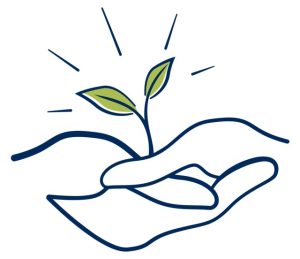Agriculture: Wellness and Resilience
It’s important to try to build ways of managing stress into our work within agricultural fields. Much like with our equipment, the likelihood of breaking down increases if we do not make time for regular care. Every year we incorporate time in our schedules for regular maintenance of our tractors, chainsaws, and boats before the seasonal intensity of the growing, logging, or fishing season. It is just as important to build in time to take care of ourselves.
“A healthy farm is nothing without a healthy farmer.”
When we plant a seed in the spring, it can take many resources, and many hands, until we begin to see growth. The same is true for individual well being!
Let’s work well together.
Rather than getting stuck in uncertainty, we can look at uncertainty as an opportunity for change. Let’s focus on what we can control and lean into the resources available to us. By broadening our conversations around the impacts of mental and physical health in the agricultural industry, we can build a stronger community together.
The Suicide and Crisis Lifeline is 988.
*Please know that the previous Lifeline phone number (1.800.273.8255) will always remain available to people in emotional distress or suicidal crisis, even with the transition to 988.
Support will be available in English and Spanish. Tele-interpreters are available to help in up to 150 languages. TTY: Use your preferred relay service or dial 711 before dialing 1.800.273.8255.
 Follow @mainefarmwellness on Instagram!
Follow @mainefarmwellness on Instagram!
This Instagram account from UMaine Extension focuses on agricultural wellness and resilience. Regular postings feature wellness tips, resources, crisis support information, upcoming events and workshops, and so much more. A good way to stay informed and connected. You are never alone.
VIDEO: Managing Stress on the Farm (YouTube)
This video was created in partnership with the University of Maine Cooperative Extension and Maine AgrAbility. For links to the resources at the end of the video (and more), visit the Help Lines and Resilience Resources sections.

